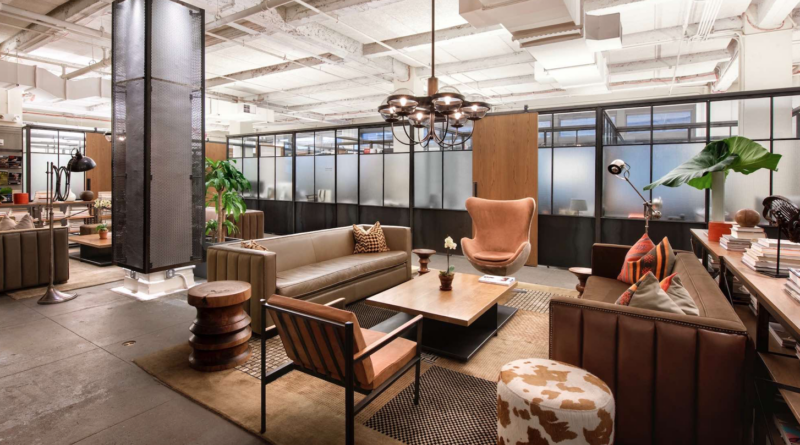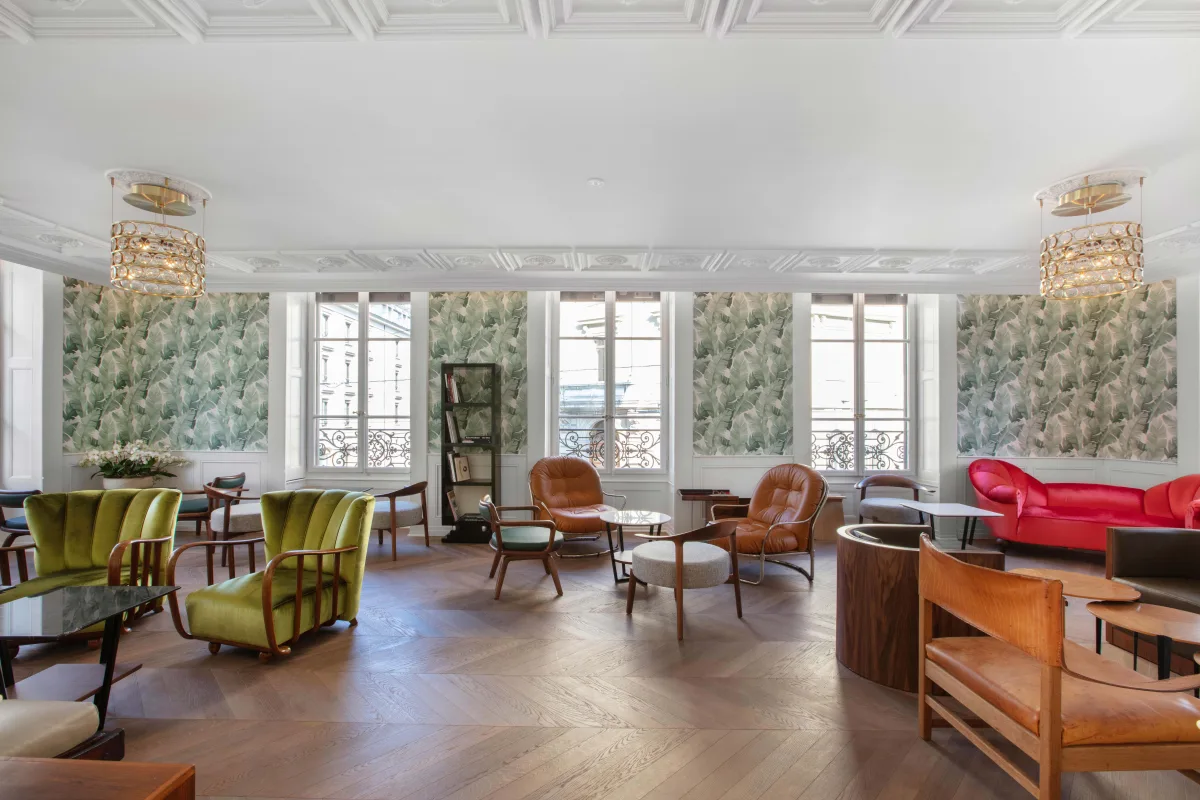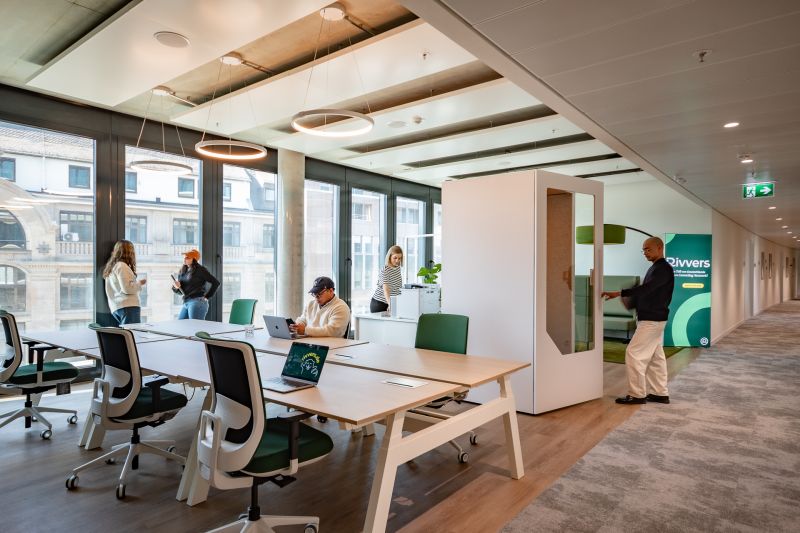Editor of Boutique Hotel News, Eloise Hanson, examines the crossover between coworking brands and private members clubs.
Changes to our working and social habits is prompting a re-evaluation of product offering from hospitality businesses. Alternative revenue streams – for example, leasing facilities for cloud kitchen services – have been explored by owners and operators looking to protect ROI and improve cashflows respectively.
The introduction of dedicated coworking areas has been in direct response to the rise of remote working. These are spaces which private members clubs typically provide judging by how the space is used – to work and hold meetings, though to ultimately socialise.
It’s the social element which plays a major role in the coworking and members club crossover. What the end user now requires from the buildings they occupy has evolved beyond four walls, a trend most apparent in the wider travel industry. Gone are the days of standardisation, a one-box-all type approach. Cue buzzwords such as bespoke experience, or authentic and local community.
Coworking operators are identifying this cultural shift. Take NeueHouse for example, which leases office buildings and hosts its own networking events for tenants, but where membership also grants reciprocal access to select members clubs globally. NeueHouse has been in operation since 2013 and is an early indicator of the coworking and members club crossover.
Perhaps this model is what Airbnb’s Brian Chesky is referring to when he said that the office as we know it is over. In an interview with Time magazine, Chesky said: “If the office didn’t exist, would we invent it? And if we invented it, what would it be invented for? I think that for somebody whose job is on a laptop, the question is: what is an office meant to do?”
The social environment of offices – to foster those so-called water cooler moments – is essentially what private members clubs set out to champion. Kevin O’Shea, chief creative officer at Salt Hotels, said about the group’s first foray into members clubs: “As a result of the pandemic, we’ve noticed how the lines of work and play have blurred, and there is an increased desire to live with flexibility and freedom.”
Whilst true, the reality for some members club paints a very different picture. The Financial Times covered a story during the pandemic which detailed how seven members clubs in London had closed. Other headlines from the Evening Standard and The Telegraph also explore how clubs are struggling financially.
The perceived value of subscription services, the model which underpins both members clubs and coworking brands, is partly to blame. To categorise subscriptions, Deloitte has highlighted three mutually exclusive subscription types:
- Service – subscribing to a digital service such as Netflix or a traditional service such as a monthly gym pass.
- Product – subscribing to consumable products on a regular basis such as snack boxes, or durable products on a rental basis such as laptops.
- E-commerce – access to value-added services such as free delivery or special discounts, for a fixed upfront fee.
There are some select companies such as Amazon which combine all three types to capitalise on the full potential of providing a single payment for several services. And arguably, members clubs are the same:
- Service – a monthly or annual pass to gain entry to the club.
- Product – access to the physical premises, facilities, events and socialnetwork.
- E-commerce – the special discounts that members receive onaccommodation, dining and events.
The pandemic hasn’t been kind to members clubs because all three of these pillars were hit. Clubs fell under some pressure because the product – the physical premises – had to close, whereby the service – the monthly/annual pass to become part of the club – depreciated in value. This leaves operators with e-commerce to support and drive the business forward.
Some clubs decided to offer membership freezes, or offer credit to spend in-house when venues were able to reopen. Some shifted to digital as a way to engage and interact with members when face-to-face connections were severed.
Female-only clubs such as AllBright offer a free digital membership providing access to a weekly newsletter, articles, select events and industry groups. Other clubs have simply bolted on a digital offering as an additional free perk for members only.
In a new report by Juniper Research, the company expects digital services to become a major revenue stream representing 39 per cent of the global subscription market value in 2022. The report also notes how the global market value of the subscription economy will grow to 275 billion dollars this year – that’s an increase of 51 billion dollars from 2021.
There’s an opportunity for clubs to maximise this potential and introduce a digital cultural programming subscription. To successfully launch a subscription service, Ali Powell, CEO of Commercial Acceleration, recommends researching target customer needs in order to identify the right value proposition, pricing strategy, and promotional gateways.
But what is the value of digital membership when human interaction and rubbing shoulders with like-minded people is one of the motivating reasons for club membership sign up?
Speaking about the role of digital memberships, Guy Ivesha, CEO of Maslow’s – the company behind Mortimer House, said: “I just feel that at some point, people are overdosing on digital content and communication. To me, I feel like it’s too much – content is being created for the sake of creating content, not because it’s exactly what people want.
“There’s a level that can be crossed that’s inauthentic… Even if people have a loyalty to something, they’re quick to become disloyal if they like something else. With the younger generations I think there’s less loyalty to a brand.”
So what is it that members want? Another motivating reason for signing up to a club membership is access to work space facilities. Whilst some clubs restrict the use of laptops on premises, conversations around the future of the office may prompt a relaxation of such rules.
Goldman Sachs and Tesla have recently called on employees to return to the office or risk losing their jobs. Others such as Google and Apple have implemented a hybrid work policy, with employee time divided between the office and home. Given the current war on talent, I’ll argue that hybrid models – empowering employees with the flexibility that they require to perform – is going to become the favoured path forwards.
Providing similar access to venues and dining discounts, coworking platforms are in a great position to capitalise on the shift to hybrid working. Take for example hot- desking platform AndCo, which charges an annual feel of £150 for you to work from over 400 London locations. The company has partnered with numerous lifestyle hotel brands including Mama Shelter, Autograph Collection, Curio Collection and more.
These are properties which, from a design point of view, have a similar aesthetic and vibe to that of a members club. Some hotel brands have even decided to launch a coworking arm of their own, for example Working From_ by The Hoxton, and Selina which operates dedicated coworking spaces within its portfolio of 150 signed and upcoming hotels worldwide.
At a time when price sensitivities are prompting consumers to cancel their subscription or membership, it raises important questions around what consumers now value. And a distinguishing feature between coworking brands and members clubs is inclusivity and exclusivity.
Members clubs have notoriously made headlines regarding application processes. Some require existing members to recommend new members, some have certain policies on gender, race and professional background, and others have age restrictions. Even if you meet the required standards for membership consideration, this doesn’t guarantee membership status. It’s very exclusive.
On the coworking side, and to take WeWork as a generic example, anyone who needs a desk or room to work can sign up for coworking membership. It’s very inclusive.
There are however some coworking brands which operate similar policies to members clubs. Bridgid Coulter Cheadle, founder of the luxury coworking space Blackbird Collective in LA, said: “Blackbird was created with the intention of empowering ambitious women of colour and allies to create positive change for each other and the world. Blackbird contributes to a growing $26 billion global coworking market. While temporarily impacted by Covid, like so many other businesses, Blackbird reopened officially in June with renewed vigour and 500 confirmed members.”
Coworking brands are evolving at pace and in tune with consumer sentiment and values. For those who missed the property tours at Urban Living Festival 2022, Level39 is a coworking space to over 1,250 tech professionals. The company provides office space alongside mentoring and networking opportunities. It publishes insights and advice articles, hosts seminars, workshops and drop-in sessions for members. On paper, how is Level39 different from a members club?
Similarly, Workbox is a Chicago-based coworking startup. Some of the additional benefits that come with a Plus membership include seminars, digital marketing courses, bookkeeping, and programs which teach members how to pitch their business to investors. The company’s CEO and co-founder John Wallace said: “I just thought that [coworking] had no differentiation; everybody was just selling space. We started the business to be a toolbox for early and growth-stage companies to be successful… We’re a lot stickier than some of our peers.”
The similarities between coworking brands and private members clubs will likely escalate over the next few years. The shift to hybrid working patterns means there’s a larger pool of potential members. Couple this with the social need to engage and interact with like-minded individuals, and the landscape is ripe for new development. Could the rise of coworking platforms influence the longevity of members clubs? And what effect will this have on future operating models?








